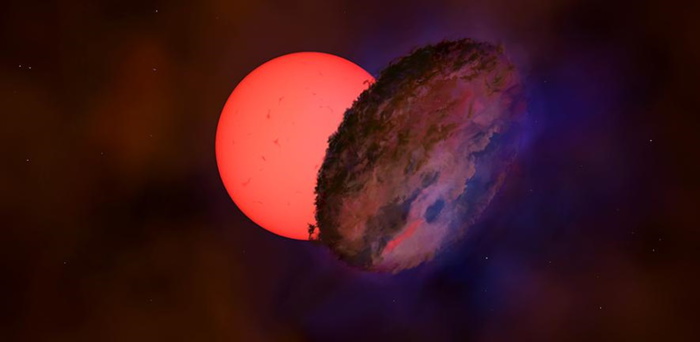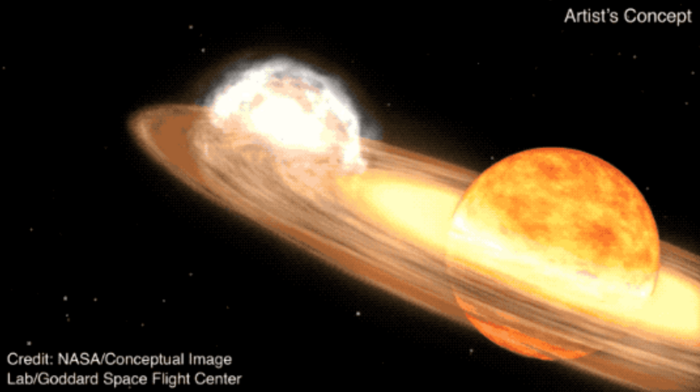A bright object flashes near the heart of the Milky Way, more than 25,000 light years from Earth: it is a giant star never seen with a mass about 100 times that of the Sun. It is described in the study published in the Monthly Notices of the Royal Astronomical Society from group from the British University of Cambridge Astronomy Institute led by Leigh Smith.
Called VVV-WIT-08, the star has an unusual behavior: it loses brightness until it disappears from the sky, and then becomes bright again.
A rarity in the Milky Way, which astronomers are now trying to understand.
The study is based on the Variables in the Via Lactea survey of the Vista telescope (Visible and infrared Survey telescope for astronomy), in Chile, managed by the Southern European Observatory (ESO).
The most credited hypothesis by the authors of the study is that the giant star VVV-WIT-08 is part of a new class of binary systems.
This would explain the unusual flashing behavior of the star, which would lose brightness because it is periodically eclipsed by a companion not yet identified.
According to Smith, "the companion, which may be another star or even a planet, is surrounded by an elongated, opaque disk that covers the giant star, causing it to disappear and reappear in the sky."
Another possibility is that some unknown dark object adrift may simply have obscured the star by accident, as it is located in a dense region of the Milky Way.
However, the experts explain, the simulations have shown that, for this scenario to be probable, there should be a very large number of dark bodies floating around the galaxy.
For the experts, there are certainly many other binary systems such as that of VVV-WIT-08.
“Now the challenge - concludes Smith - is to understand the nature of the hidden companion and how it was surrounded by its dark disk, despite orbiting away from the giant star.
In this way, we could learn something new about how these types of binary systems evolve ”.






